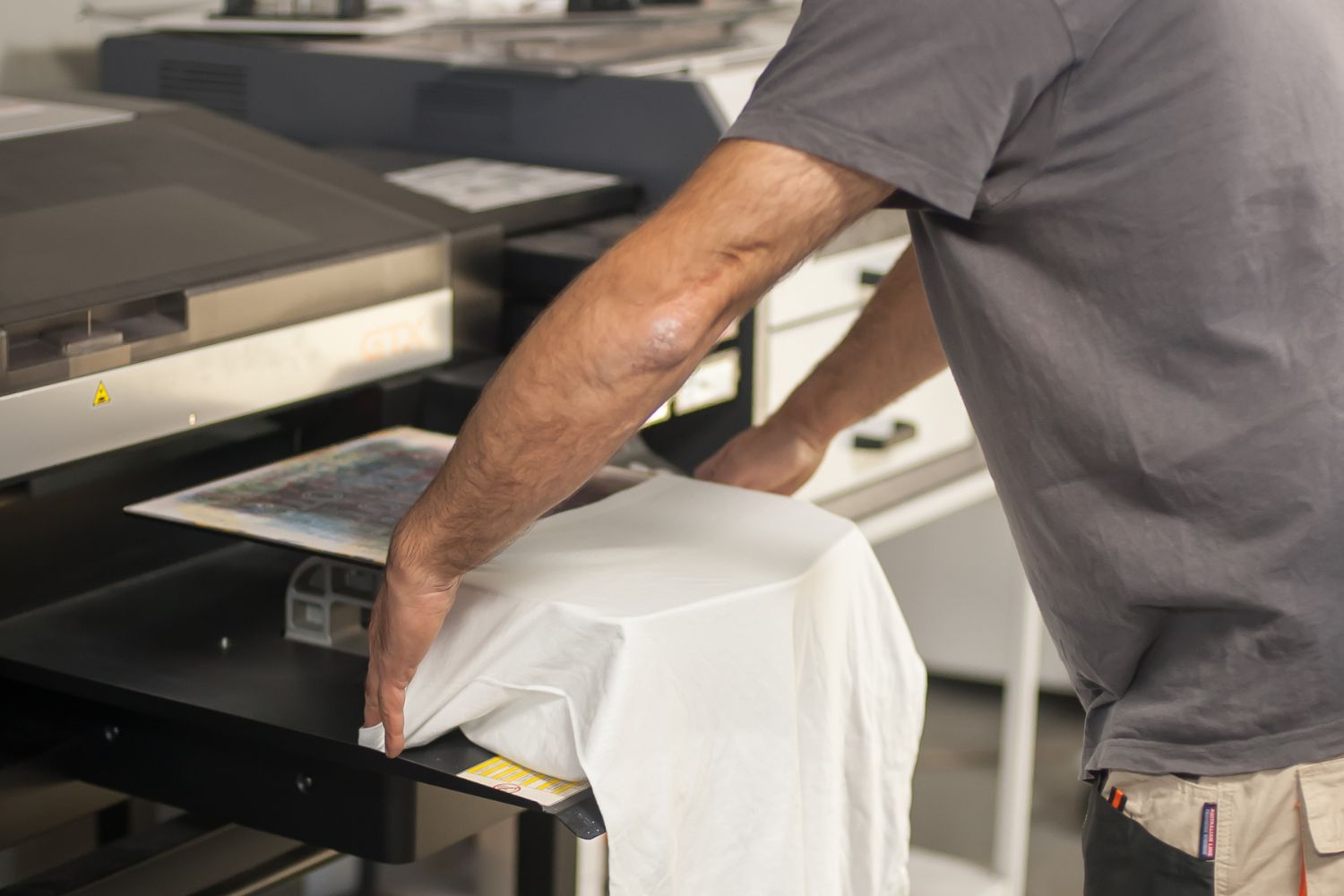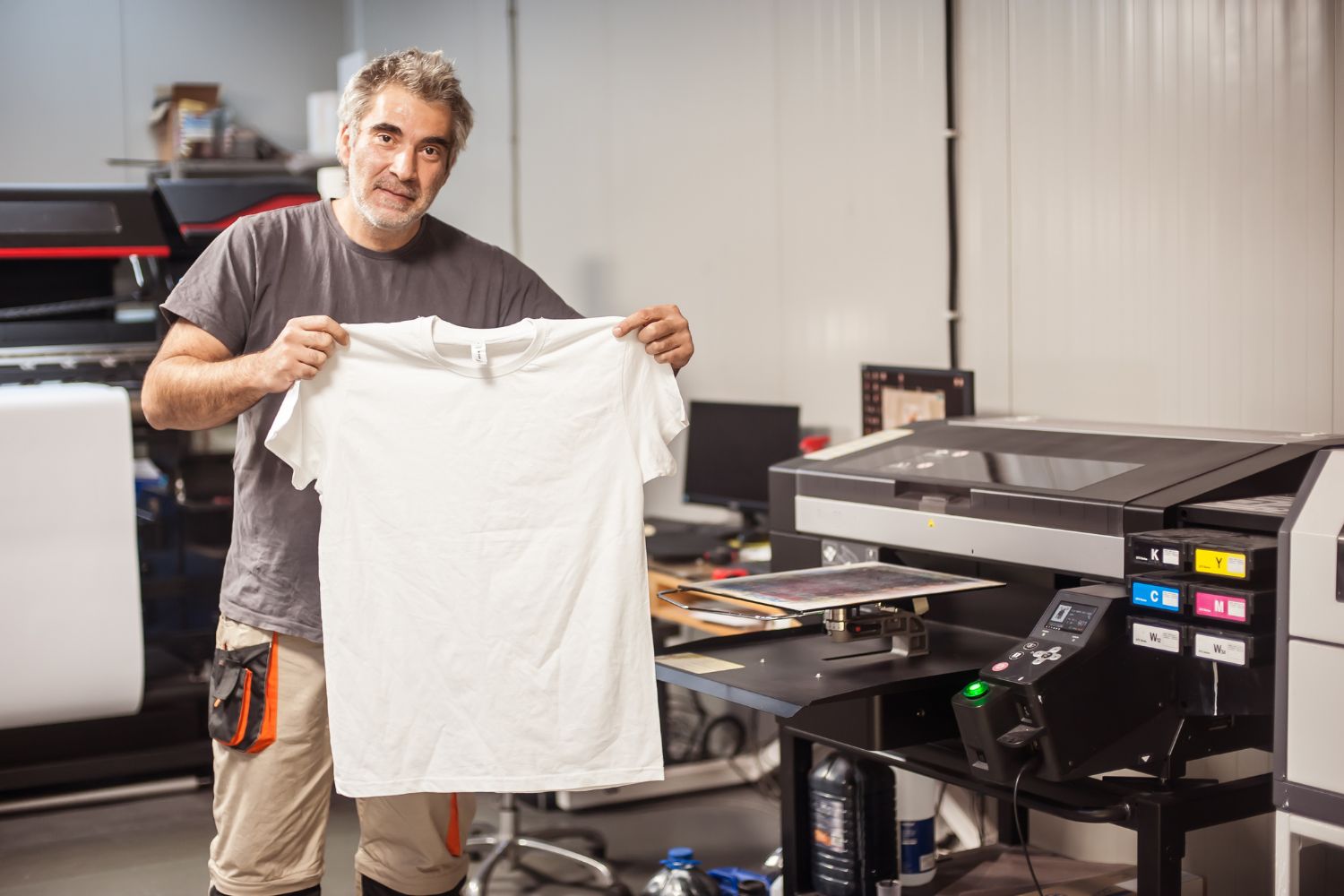Introduction
Direct-to-garment (DTG) printing is a modern technology that allows digital designs to be printed directly onto garments. This method offers exceptional print quality and flexibility, making it ideal for those looking to get started in the textile customization business. Whether you're a budding entrepreneur or a design enthusiast, understanding the basics of DTG printing is essential for success in this field. In this article, we'll explore the necessary equipment, fundamental techniques, and practical tips to help you successfully launch your DTG printing business.
Essential equipment to get started in DTG printing
1. The DTG printer
The central element of your business is the DTG printer. It's crucial to choose a model that suits your needs and budget. DTG printers vary in capacity, speed, and print quality. For example, some are designed for large-scale production, while others are better suited for small runs or prototypes. Investing in a quality printer ensures sharp, long-lasting prints, which are essential for satisfying your customers.
👉 Explore our comparison of the best DTG printers in 2025
2. Inks and consumables
Ink quality directly influences the final result of your prints. Choose certified inks, ensuring printing without harmful substances. Additionally, having consumables such as pretreatment products, printhead cleaners, and protective fluids is essential to maintain the performance of your equipment and the quality of your prints.
👉 Discover our range of DTG inks and consumables for optimal printing.
3. Auxiliary equipment
In addition to the printer and inks, certain auxiliary equipment is essential. A heat press, for example, is used to fix the ink to the textile after printing, thus ensuring the durability of the design. Additionally, an ergonomic workstation and maintenance tools will facilitate your production process and ensure consistent quality.
Fundamental Techniques for Successful DTG Printing
1. Preparation of the textile
Textile preparation is a crucial step in ensuring quality printing. It involves applying a pre-treatment solution to the fabric, especially for dark textiles, to ensure optimal ink adhesion and vibrant colors. This step also helps prevent smearing and ensures increased print durability.
👉 Discover our DTG pretreatment for efficient preparation of your textiles.
2. Design concept
Design quality directly influences the final print result. Use professional graphic design software to create high-resolution visuals suitable for DTG printing. Make sure the colors, dimensions, and file formats are optimized for your printer to avoid surprises during printing.
3. Printing and finishing process
Once the textile is prepared and the design is finalized, place the garment on the printer bed, ensuring alignment. After printing, use a heat press to set the ink, ensuring the design's durability and wash resistance. This finishing step is essential to ensure customer satisfaction.
Tips to optimize your DTG printing business
1. Continuing education
The DTG printing industry is evolving rapidly with the emergence of new technologies and techniques. Attending regular training sessions will help you stay up-to-date and continually improve the quality of your products. It will also give you a competitive edge by offering innovative services to your customers.
2. Regular maintenance of equipment
Regular maintenance of your printer and associated equipment is essential to prevent breakdowns and ensure consistent print quality. Clean the printheads, check ink levels, and ensure all components are functioning properly. Well-maintained equipment extends its lifespan and reduces the cost of unplanned repairs.
👉 Discover our cleaning solutions and other supplies for DTG printers to ensure the longevity of your equipment.
3. Efficient inventory management
Effective inventory management of inks, textiles, and consumables helps prevent stockouts and ensure smooth production. Implement a tracking system to anticipate needs and place orders on time. This will also allow you to better control your costs and optimize your cash flow.
Conclusion
Getting started with DTG printing is an exciting opportunity for anyone looking to personalize textiles with high-quality designs. By investing in the right equipment, mastering essential techniques, and adopting effective management practices, you'll lay the foundations.




Leave a comment
This site is protected by hCaptcha and the hCaptcha Privacy Policy and Terms of Service apply.